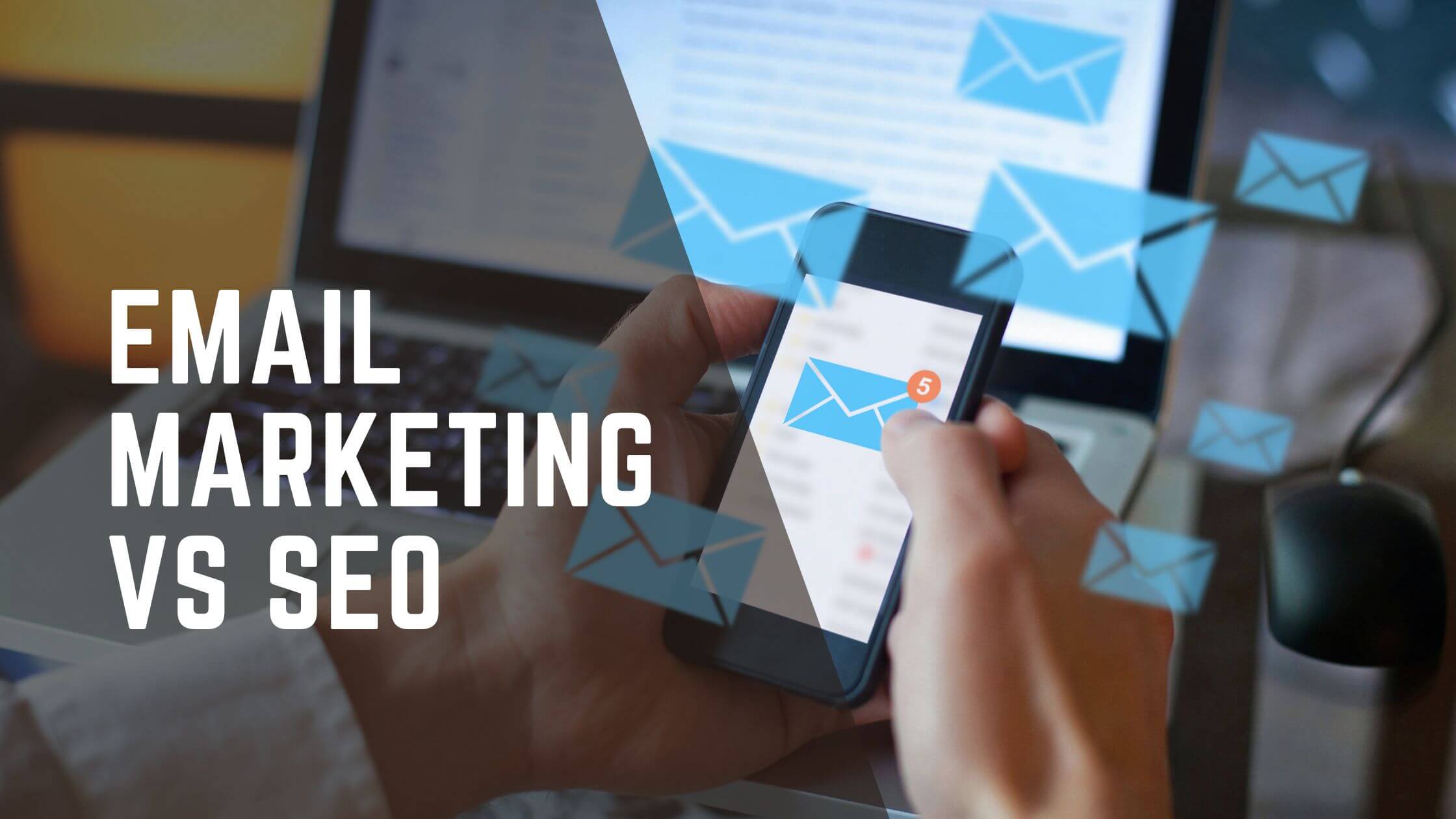Some links on this post may link to affiliate pages that offer compensation to the author of this post.
Hello and welcome to the marketing class! Marketing class is my blog I started when I was a digital marketing student at Utah Valley University where I would publish my notes for review and SEO. Lately, it’s grown to the types of articles I write to help small business owners and entrepreneurs identify the best marketing strategy for their businesses. In today’s article, I will be covering Email Marketing VS SEO and which strategy you should prioritize for your business.
Understanding the Importance of Email Marketing and SEO
Email marketing involves using email as a means to communicate with potential customers or existing clients. It allows businesses to directly connect with their audience, delivering personalized messages, promotions, and updates. On the other hand, SEO focuses on optimizing a website’s visibility in search engine results pages (SERPs), making it easier for users to find relevant information when conducting online searches.
The importance of email marketing cannot be overstated. It provides a direct line of communication between businesses and their customers, allowing for personalized messaging that can significantly enhance customer engagement and loyalty. By leveraging targeted email campaigns, businesses can effectively nurture leads, promote products or services, and drive conversions.
Similarly, SEO plays a crucial role in ensuring that businesses are discoverable online. When implemented correctly, SEO techniques improve a website’s visibility on search engines like Google or Bing. By ranking higher in SERPs for relevant keywords or phrases related to their industry or offerings, businesses increase their chances of attracting organic traffic from potential customers actively searching for products or services they provide.
When used together strategically, email marketing and SEO can amplify each other’s impact on business growth. For instance, by incorporating links to valuable content within emails sent to subscribers, businesses can drive traffic back to their website while simultaneously boosting engagement metrics that positively influence search engine rankings.
The Benefits and Limitations of Email Marketing
Email marketing has become an essential tool for businesses to connect with their audience and drive conversions. Understanding the benefits and limitations of email marketing can help marketers make informed decisions about their campaigns.
One of the key benefits of email marketing is its ability to deliver targeted messaging. Through segmentation and personalization, businesses can tailor their emails to specific customer groups, increasing the relevance and effectiveness of their campaigns. This targeted approach not only improves open rates but also enhances customer engagement and conversion rates.
Furthermore, email marketing allows for automation, saving time and effort for marketers. Automated emails can be triggered by specific actions or events, such as a welcome series for new subscribers or abandoned cart reminders. This automation streamlines the communication process and ensures timely delivery of messages.
However, it is important to acknowledge the limitations of email marketing as well. One limitation is the potential for emails to be ignored or marked as spam by recipients. With overflowing inboxes, it’s crucial for marketers to create compelling subject lines and valuable content that grabs attention.
Another limitation is that not all customers may prefer email as their primary communication channel. Some individuals may prefer other methods such as social media or direct mail. It’s important for businesses to diversify their marketing efforts across various channels to reach a wider audience.
The Benefits and Limitations of SEO
One of the key benefits of SEO is the ability to drive organic traffic to a website. By optimizing for relevant keywords and providing high-quality content, websites can attract visitors who are actively searching for products or services related to their industry. This targeted traffic can lead to higher conversion rates and increased revenue.
Another advantage of SEO is its potential for long-term results. Unlike paid advertising methods that require ongoing investment, once a website ranks well in search engine rankings, it can continue to attract organic traffic without additional costs. This makes SEO a cost-effective strategy in the long run.
Moreover, by implementing effective SEO techniques, websites can enhance their visibility in SERPs. Higher rankings translate into greater exposure and credibility for businesses. Improved visibility not only helps in attracting more visitors but also builds trust among users who perceive top-ranked websites as more reliable and authoritative sources.
However, it is important to acknowledge the limitations of SEO as well. One major limitation is that achieving top rankings on SERPs requires time and effort. It takes consistent optimization efforts and patience before seeing significant results. Additionally, search engine algorithms frequently change, making it necessary for marketers to adapt their strategies accordingly.
Furthermore, while SEO increases organic traffic, there are no guarantees regarding user behavior once they land on a website. Converting visitors into customers depends on various factors such as website design, user experience, and the quality of products or services offered.
Email Marketing Strategies to Drive Conversions and Customer Retention
Personalized emails are key to engaging customers and increasing conversion rates. By tailoring the content of each email to individual preferences and behaviors, businesses can create a more personalized experience that resonates with recipients. This can include using their name in the subject line or body of the email, recommending products based on their past purchases or browsing history, or sending targeted offers based on their demographics or interests.
Segmentation is another crucial strategy in email marketing. By dividing your subscriber list into specific segments based on demographics, purchase history, engagement level, or any other relevant criteria, you can send highly targeted emails that are more likely to resonate with each segment. This allows you to deliver more relevant content and offers that address the specific needs and interests of each group.
Automated workflows further enhance the effectiveness of your email marketing efforts. With automation tools and platforms available today, you can set up triggered emails that are sent automatically based on specific actions or events. For example, you can send a welcome email series to new subscribers or follow up with abandoned cart reminders to encourage conversions. These automated workflows save time while ensuring timely communication with your audience.
SEO Strategies to Boost Website Ranking and Organic Traffic
Keyword research plays a vital role in SEO ranking strategies. It involves identifying relevant keywords and phrases that potential users are likely to search for. By integrating these keywords strategically throughout the website’s content, meta tags, and headings, search engines can better understand the website’s relevance to specific search queries.
On-page optimization focuses on optimizing individual web pages to improve their visibility in search engine results. This includes optimizing title tags, meta descriptions, URL structures, and heading tags with relevant keywords. Additionally, ensuring the website has high-quality content that meets user intent is essential for on-page optimization.
Link building techniques are another important aspect of SEO strategies. Building high-quality backlinks from reputable websites helps to establish credibility and authority in the eyes of search engines. This can be achieved through guest blogging, social media promotion, influencer outreach, and creating valuable content that naturally attracts links from other websites.
By implementing these SEO strategies effectively, website owners can improve their rankings in search engine results pages (SERPs) and drive more organic traffic to their websites. It is important to note that SEO is an ongoing process that requires continuous monitoring and adaptation based on industry trends and algorithm updates.
Determining Your Priorities: When to Focus on Email Marketing or SEO?
Both strategies can yield significant results, but knowing when to focus on each depends on various factors such as your business goals, target audience, and industry competition.
Email marketing remains a powerful tool for nurturing customer relationships and driving conversions. It allows you to directly reach your audience and deliver personalized messages. If your primary goal is to engage with existing customers or build brand loyalty, investing time and resources into email marketing can be highly beneficial. Additionally, if you have a well-segmented email list with high engagement rates, it may make sense to prioritize this channel over SEO.
On the other hand, SEO plays a vital role in increasing organic visibility and driving traffic to your website. If your business relies heavily on attracting new customers through search engines, focusing on SEO is essential. By optimizing your website’s content and structure according to relevant keywords and industry best practices, you can improve your chances of ranking higher in search engine results pages (SERPs). This increased visibility can lead to higher organic traffic volumes and potentially more conversions.
To determine which strategy should take precedence at any given time, consider factors such as the stage of your business growth, the level of competition in your industry, and the resources available to you. Conducting thorough market research will help identify where potential customers are most likely to engage with your brand – whether it be through email or search engines.
Conclusion: Integrating Email Marketing and SEO for Optimal Results
Ultimately, striking a balance between email marketing and SEO is often the most effective approach. Integrating both strategies into an overarching digital marketing plan ensures that you’re maximizing opportunities for customer engagement while also working towards long-term organic visibility online.
Thanks for reading to the end of this post. If you find the information I provide to be helpful, please consider subscribing.
Disclaimer: None of the information presented on this site constitutes legal, business, tax, or medical advice. In each scenario, it’s recommended to first chat with a medical, legal, business, or tax professional before making any decisions.


